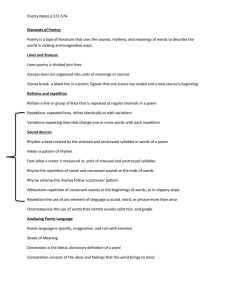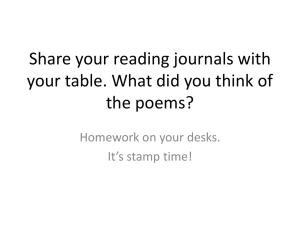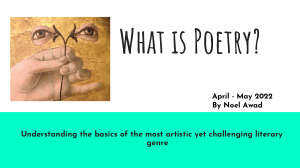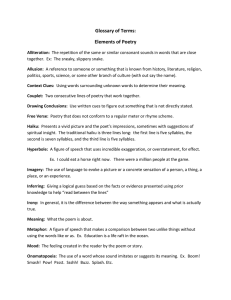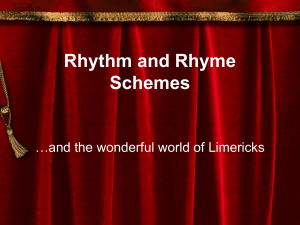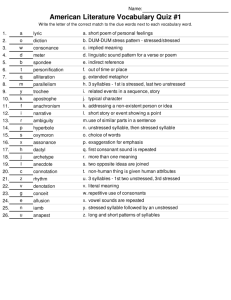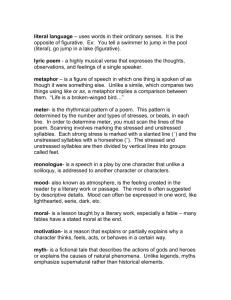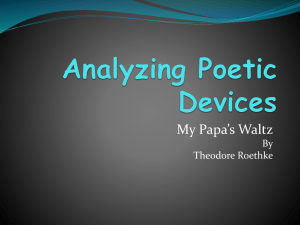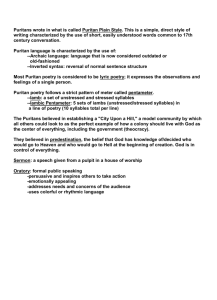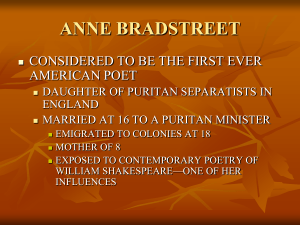File
advertisement
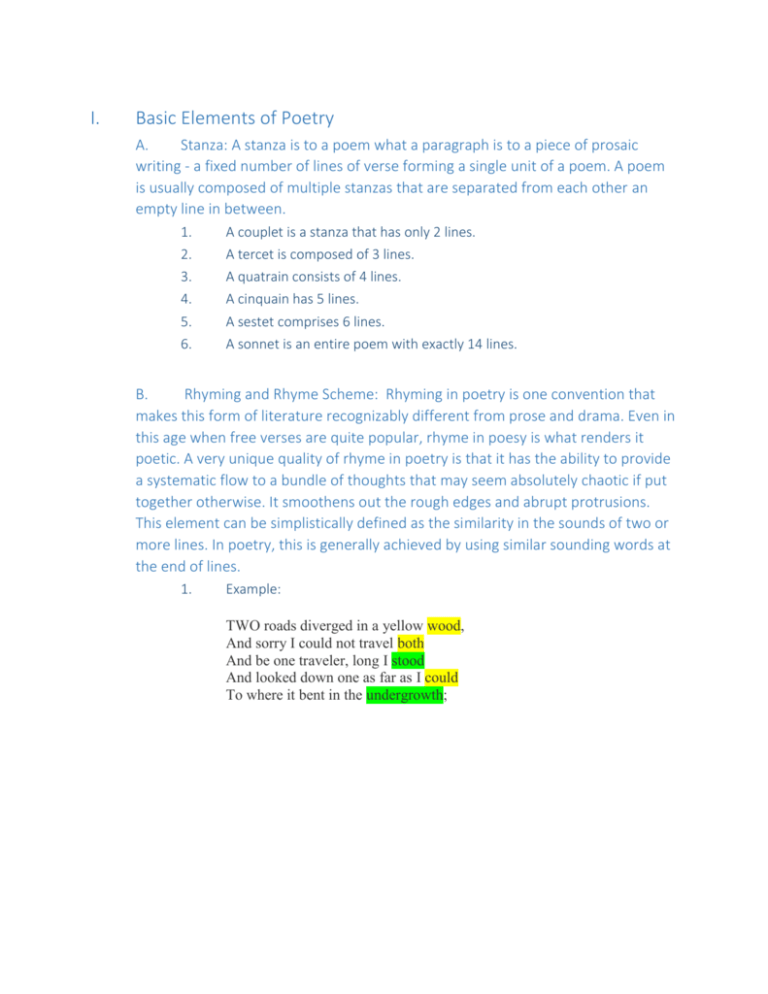
I. Basic Elements of Poetry A. Stanza: A stanza is to a poem what a paragraph is to a piece of prosaic writing - a fixed number of lines of verse forming a single unit of a poem. A poem is usually composed of multiple stanzas that are separated from each other an empty line in between. 1. 2. 3. 4. 5. 6. A couplet is a stanza that has only 2 lines. A tercet is composed of 3 lines. A quatrain consists of 4 lines. A cinquain has 5 lines. A sestet comprises 6 lines. A sonnet is an entire poem with exactly 14 lines. B. Rhyming and Rhyme Scheme: Rhyming in poetry is one convention that makes this form of literature recognizably different from prose and drama. Even in this age when free verses are quite popular, rhyme in poesy is what renders it poetic. A very unique quality of rhyme in poetry is that it has the ability to provide a systematic flow to a bundle of thoughts that may seem absolutely chaotic if put together otherwise. It smoothens out the rough edges and abrupt protrusions. This element can be simplistically defined as the similarity in the sounds of two or more lines. In poetry, this is generally achieved by using similar sounding words at the end of lines. 1. Example: TWO roads diverged in a yellow wood, And sorry I could not travel both And be one traveler, long I stood And looked down one as far as I could To where it bent in the undergrowth; C. Rhythm and Meter: Rhythm is the pattern in which a pet chooses to sequence the stressed and unstressed syllables in every line of a poem. 1. The three factors that determine rhythm a) b) Number of syllables in each line The total count of stressed syllables c) The number of recurring patterns of syllables- stressed and unstressed 2. Meter: like rhythm, it refers to the pattern of stressed unstressed syllables in a line of poetry (number of feet) 3. a) One foot: mono meter b) c) d) Two feet: dimeter Three feet: trimester Four feet: tetrameter Feet/foot: the pattern of two syllables as stressed and unstressed D. Figurative Language: is a technique poets use to express more than the literal meaning of the words. 1. Devises poets use a) b) Simile: comparing two things using like or as Metaphor: an indirect comparison not using like or as c) Imagery: the figurative painting of a vivid picture in the mind of the reader d) Symbolism: When a word or phrase or object represents more than the literal meaning
